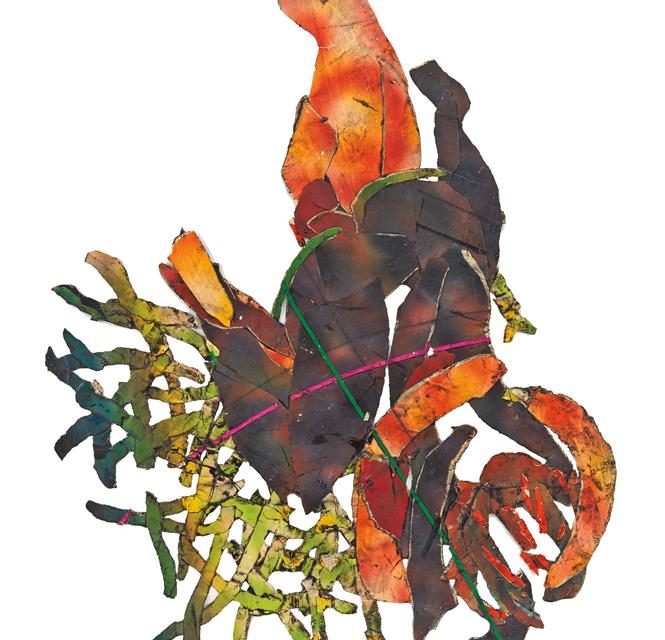In 1967, Gordon Mumma of the ONCE Group observed that artists are nourished by the cultural communities in which they live, which reflect back to them the basis for their own artistic insights. This describes the life and work of Leni Sinclair, whose photographs document an ambitious counterculture that thrived in Detroit and Ann Arbor during the 1960s and 70s. Her pictures are among works on display at the U-M Stamps Gallerys exhibit, Have We Met? Dialogues on Memory and Desire, which runs through November 18.
The amount of work by women and people of color in this exhibit is refreshing. Yoko Ono’s Cut Piece reminds us that the female body, as subject and object, constitutes humanity’s longest-running controversy. Martha Rosler’s photo-collage series House Beautiful: Bringing the War Home critiques militarism, gender politics, and marketing-as-culture. Citizens, a series of photo studies by Maren Hassinger, contrasts members of Alvin Ailey’s dance company; mourners at a service for slain police officers in Tyler, Texas; Black Lives Matter demonstrators holding a sign that reads “Stop Killing Us”; and a frowning white youth who glares back at them.
Gregory Sholette’s Degenerate Me casts his own facial features onto an image used by Nazi Germany’s Reich Ministry of Public Enlightenment and Propaganda to ridicule modernist art, which the self-appointed arbiters portrayed as a mental disorder reflecting inferior ethnicity. Sholette describes it as a reference to this 1930s cultural intervention by ultra-nationalist racists, suitable to our present moment.
Zafos Xagoraris’ interactive installation, The Speaker: American Protest 1960s and Today, is his “historical nod” to a Berkeley free speech rally where an automobile was used as an improvised soapbox. By way of green-screen technology, people superimposed atop a 1964 Ford Thunderbird celebrate freedom of expression by talking, singing, and even dancing.
Some of the artworks speak for themselves, like the colorful posters by Black Panther Emory Douglas, or Sam Durant’s electric sign with flashing “walk” and “wait” pedestrian icons juxtaposed over the words “You are on INDIAN LAND–Show Some Respect.”
Others need more context. The explanatory text for much of the exhibit is minimal, and there is no catalog. Who was Rudolf Baranik? Why is his work exhibited here? Go ask Wikipedia. A computer is provided for that purpose. Yet few people visiting the gallery are likely to take the time to do so.
Brendan Fernandes’ I am old enough to know what we’ve lost consists only of those words, displayed in large red vinyl lettering. This is a haunting statement, especially as so much hard-won social progress has been exploited and taken for granted and is now being relentlessly dismantled.
Have We Met?
Freedom of expression at Stamps Gallery

Credit: Courtesy U-M Stamps Gallery

